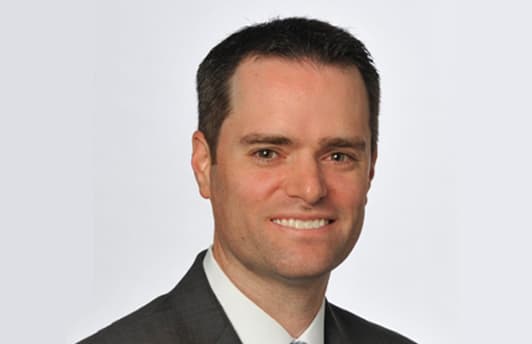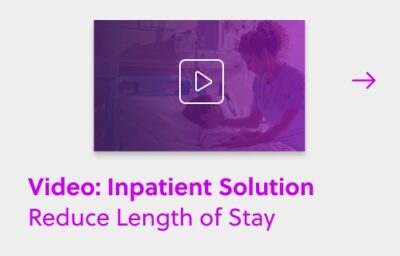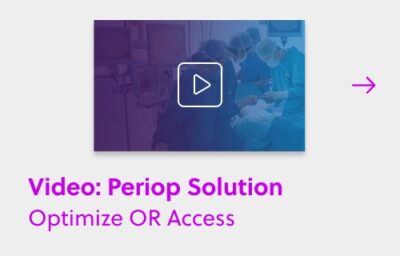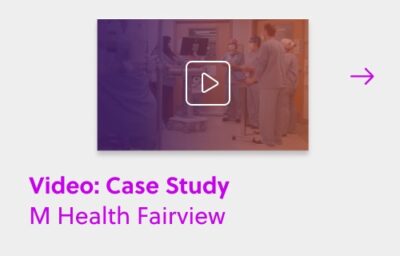
T.J. Senker, president of MedStar Montgomery Medical Center, recently took time to talk with Qventus about the potential for artificial intelligence to have real impact on hospital operations. MedStar Montgomery, staffed by over 1200 associates, deployed the Qventus AI platform as part of a holistic falls prevention program in 2016.
As president, T.J. is responsible for the overall strategic and operational direction of the hospital, with a primary focus on building and advancing the hospital’s service lines, programs and clinical quality. He is also a senior vice president for MedStar Health, a $5 billion not-for-profit health system in the Baltimore-Washington, D.C. region.
With a healthcare career spanning 17 years, Senker is an experienced leader and change agent who has leveraged Lean/Six Sigma methodologies to achieve higher levels of quality and safety at lower costs.
This is the first in a series of leadership interviews exploring the impact on new technologies on hospital operations.
1. What technology trends do you think have had the most impact on hospital operations?
T.J. Senker: I think the most obvious one has really been the conversion to Electronic Health Records (EHR). The impact it had on the workforce and the traditional way that healthcare is executed in many ways has been very positive. It has helped hospitals get better about documentation and sharing information. In other ways, it’s made it more complex and more difficult to do what’s necessary in a timely fashion. The EHR is fantastic at capturing data, but that often creates a challenge for care providers to use the EHR information effectively while staying fully engaged with patients. Inputting data is much easier than obtaining insights.
2. What have been the biggest challenges and rewards to deploying the health records?
TS: On the challenge side, it just represented such a major workflow change. For folks who had been practicing a long time, it was hard to break patterns of behavior and ways of doing things that they were comfortable with. The technology itself was something that had to be learned.
On the positive side, you really hope to, in many ways, make the care more effective with the information available in the systems. When you think about things like medication management, it really helps us from a safety perspective to ensure that the care being provided is appropriate and different medications aren’t in conflict. Automating processes helps to reduce human error.
3. What new technologies are showing promise for helping support care and hospital operations?
TS: I’m a big proponent of AI. That’s a really obvious one for me in terms of being able to use technology and data differently. AI is taking all this data that’s being created by the EHR, telemetry systems, bed management systems and other data sources, and using it not only to make predictions, but also to help make decisions in real-time. For me, that’s incredibly valuable. It doesn’t replace traditional decision-making or human thought, but it definitely helps to complement and enhance it.
4. How are you using AI at MedStar Montgomery?
TS: We currently have AI as part of our focus around fall prevention, which uses call light data among other data points to help predict which patients are most at risk for a fall. Our falls numbers are incredibly low. But with AI applied to the existing fall prevention measures, we were able to better predict high risk patients to reduce the numbers even more. One fall is too many.
5. What other areas or applications might benefit from deploying AI?
Everything in the hospital is either generating or recording data. That very same data can also predict how someone might score us in publicly reported surveys and how they would rate their overall experience. Given that we already have infrastructure around call light data, we’d like to dive into patient experience applications as well. We’ve also thought about potentially developing a use for encounter data to identify super utilizers so that we can intervene differently with them and better understand other interactions they’ve had with us and other facilities. Once we understand the potential, the applications are limitless.
6. What would you say to your peers that are considering AI?
TS: My personal experience with AI has really been to test it here at MedStar to see just how well it works in our environment. I’ve been extremely pleased with the results that we’ve seen. It’s not a panacea. The technology alone isn’t going to do the job. There are other things being done to prevent falls. It’s a confluence of those things that is helping to reduce our fall with injury statistics.
My advice is to be open to testing it in a specific use case and let the technology demonstrate its effectiveness. It has to be deployed in a thoughtful way with full buy in and expectation setting with your entire cross functional team, IT care providers, and other teams that may be involved. It’s all about change management. Don’t assume that the technology is going to be the answer; you still have to drive your expected outcomes.
7. Are there any other insights you would like to share?
TS: Partnership, in our case with Qventus, is critically important. This technology learns and requires as many inputs as you can give it. It’s important to have a partner who’s vested in our organization and by extension the application of the technology. The thought that you can plug and play and automatically see improvement over time, would be poor thinking. Having a partner that’s looking at the bigger picture, trying to understand the organizational culture and helping to adapt the technology in a way that’s most effective – I have to think that that’s a big part in making us successful in achieving positive outcomes for the particular use case.


